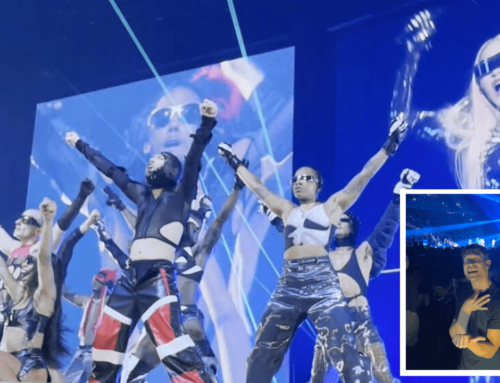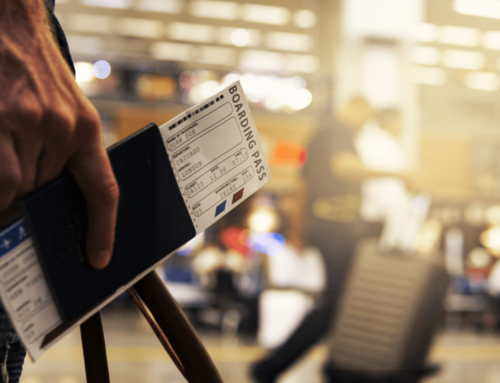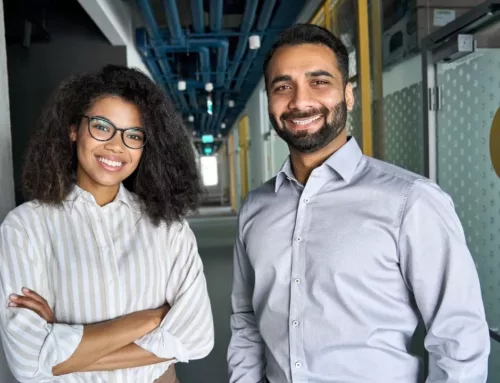Over 48 million people in the U.S. live with hearing loss- and they are far from a monolithic group.
We live in an era that celebrates sign language and Deaf Culture on a scale that previous generations never imagined. Deaf artists share the Super Bowl halftime spotlight. Deaf actor Troy Kotsur (CODA) recently earned an Academy Award nomination. The Deaffriendly Consulting staff team mostly identifies as “Capital D” (culturally Deaf) – using sign language regularly and consider being deaf as a source of cultural pride, not merely a disability.
But we are only one part of a spectrum of people who experience hearing loss: hard of hearing, late-deafened, DeafDisabled, DeafBlind, and more.
So why do labels matter, anyway?
With businesses pouring research funds into innovating core products and services, a misstep can be disastrous. Last year, Old Navy launched a line of poorly-researched tees with sign language intended to mean “Love One Another”. The product went viral in all the wrong ways: fluent signers flooded social media revealing that the sign actually was a vulgar term (the tees were yanked from shelves shortly after). Had the company consulted with deaf, ASL-fluent focus groups, the incident would’ve easily been avoided.

Let’s explore some other demographics that businesses should include in their research:
DeafDisabled (also: Deaf+), including DeafBlind
Did you know that nearly half of deaf children experience one or more additional disabilities – such as autism, learning disabilities, or range of visual disabilities.
Helen Keller, the most famous DeafBlind person on the planet, is a name everyone instantly recognizes. However, actual DeafBlind representation is so woefully limited that only three years ago, Feeling Through became the first-ever film to cast a DeafBlind actor (Robert Tarango) in a lead role.
Deaf people often experience “deer in headlights” customer service due to a lack of training on how to communicate with us. Even more so for DeafBlind consumers.
Between 45-50 million individuals in the U.S. experience both vision and hearing loss. Creating products and services meeting their needs requires a blend of things: making e-commerce websites accessible to screen readers (like JAWS), creating well-lit, safely designed store layouts for those who navigate by cane, and having creativity and patience in communicating with a DeafBlind customer.
BABY BOOMERS
The largest generation alive is aging, and hearing loss comes with the territory. Baby Boomers (1946-1964) command enormous market share in many markets, meaning many product and service innovations happen with them in mind.
In this group, age-induced hearing loss is becoming more and more common. Boomers are living longer than previous generations. But not all are outspoken about age-related hearing loss. Shaking off old-fashioned, ableist perceptions of disability can be challenging, especially for a generation that grew up in a time when it was still socially acceptable to say “deaf and dumb” and “hearing-impaired” (two terms deemed offensive today).
Unlike for someone born deaf, age-induced hearing loss requires a learning curve: costly hearing aids, learning basic sign language (should they choose to), new technology such as captioned telephones, and – last but not the least – the inevitable change in social interactions.
By understanding age-related hearing loss, businesses will be in a much better position to serve this large demographic.
PROGRESSIVE HEARING LOSS
One in four Americans will experience a disability in their lifetime. A mantra of disability justice is: It’s a club that anyone can join. In an instant, an accident can require a lifetime of mobility aids. In the case of progressive hearing loss, genetics or workforce noise exposure can be the thing that changes the degree of the disability.
Progressive hearing loss means just that: hearing loss which gets more severe over time. For businesses with loyal deaf clientele, this requires empathy and flexibility: a client who once could rely on hearing aids and speechreading, may now need speech-to-text apps or a conversation on Post-It notes.
Much like late-deafened hearing loss, this type of customer is generally new to their hearing loss journey – and may or may not yet have the self-advocacy skills to speak up for their unique, evolving needs.
One thing all of these types of customers above have in common? Combined, they have extraordinary spending power (over $8 trillion among all Americans who identify as disabled, to be specific). Like researching voters, researching and segmenting the unique profiles within our disability communities will help you bring much value to customers – and great customer service. To learn about these unique, complex demographics, follow LinkedIn for more conversations, or join our mailing list.






